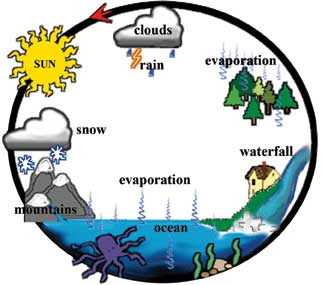Ambika Parchure
 When I was asked to write an article for this magazine, I began wondering what I would write. Despite the many, many years of teaching behind me, I had a tough time deciding on a topic! Information is now available at one’s fingertips. Google on anything under the sun and hey, presto, you’ve got it! But oh, the thrill of creating a lesson plan from start to finish by yourself and seeing your children’s responses of enjoyment and learning, that is something one can only experience.
When I was asked to write an article for this magazine, I began wondering what I would write. Despite the many, many years of teaching behind me, I had a tough time deciding on a topic! Information is now available at one’s fingertips. Google on anything under the sun and hey, presto, you’ve got it! But oh, the thrill of creating a lesson plan from start to finish by yourself and seeing your children’s responses of enjoyment and learning, that is something one can only experience.
After a lot of deliberation and reflection, I finally chose to just share my experiences of teaching Environmental Studies in the primary classes with the readers. It happens to be one of my favourite subjects because of its huge potential to make the class creative, fun, and exciting for the child. One needs to have a clear, overall objective in relation to the subject and of course, one has to keep the age group of the child in mind at all times – not go overboard by cramming irrelevant activities.
The clear objectives that I have while planning lessons are:
- to make the lesson cross-curricular (to laterally refer the topic across all subjects) – to incorporate exercises which emphasize on observation and inferences (For eg. Instead of telling an urban grade 2 child, “The sun always rises in the east and sets in the west”, you can ask them to observe the movement of the sun over a period of days at different times of the day. They will discover the pattern themselves after which the names, east and west can be introduced).
- to keep the students engaged at all times.
- as the teacher, to facilitate only by asking questions that will get the children to think.
- to counter the child’s question by another question, extracting the answers from them, either individually or in groups. (Eg. in the 4th grade instead of telling the students that, “water evaporates from the oceans, lake and rivers”, ask the children to observe what happens to water left in a saucer, what happens to wet clothes and what happens when a plant is covered with a plastic bag? Let them conduct the experiments and find out about evaporation and condensation. Once they find out that vapour needs a surface to cool on, ask them another question – “On what surface does water condense in the air?” (I’m sure many a teacher wouldn’t have asked this question to herself! Actually I was asked this question by a child and I had to find the answer before getting back to the class the next day).
- it is very important for the student to feel the ownership of learning through his/her own observations.
- and to top that, the teacher herself needs to understand the topic thoroughly if she is to answer questions by the children.
The author worked at the Rishi Valley School for 14 years. She is now the Quality Head of the Primary School at the four Parikrma Centres for Learning, Bangalore. She can be reached at ambikap@parikrmafoundation.org.
